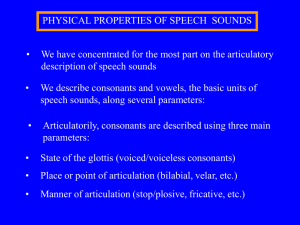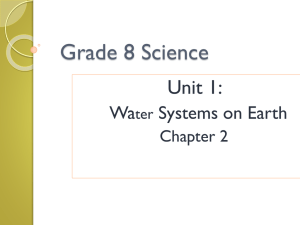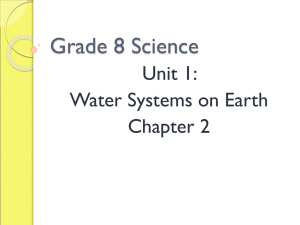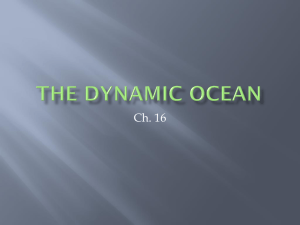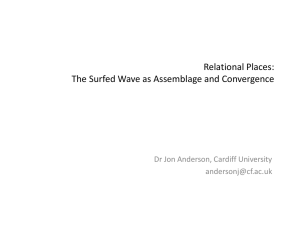Earth Science 16.3 Shoreline Processes and Features
advertisement
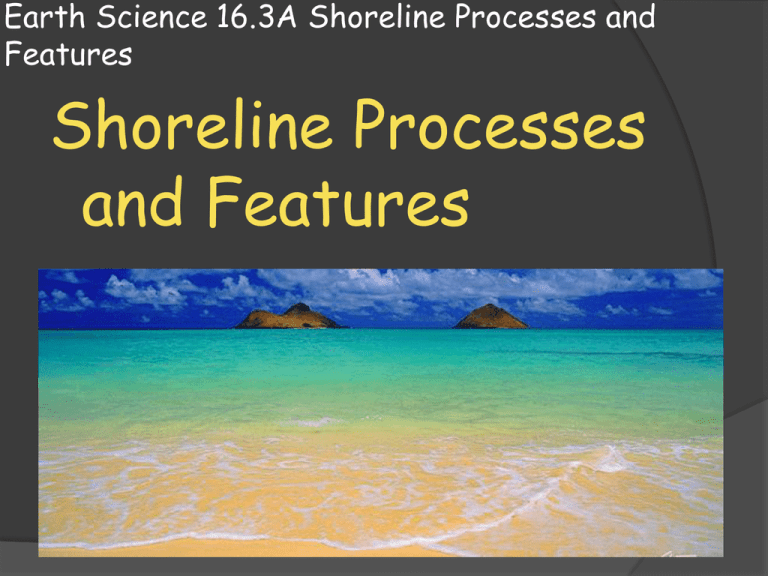
Earth Science 16.3A Shoreline Processes and Features Shoreline Processes and Features Beaches Beaches: Beaches and shorelines are always undergoing changes as the forces of waves and currents act upon them. A beach is an accumulation of sediment found along the shore of a lake or an ocean. Beaches are composed of whatever local sediment is available. They may be made of mineral particles from the erosion of beach cliffs or nearby coastal mountains. White red and black sand beaches Beaches Beaches: Sediment that makes up a beach’s sand may be fine in nature or course and large particles such as small stones. Some beaches have a large amount of biological materials mixed in. For example, most beaches in south Florida are composed of shell fragments and the remains of organisms that live in the coastal waters. White red and black sand beaches Beaches Beaches: Regardless of whatever makes up the beach’s sediment; it does not stay in one place. Beach sediment is in constant motion from forces that act upon it such as waves and currents. White red and black sand beaches Wave Impact Forces Acting Upon the Shoreline: Waves along the shoreline are constantly eroding, transporting, and depositing sediment. Many types of shoreline features can result from this activity. The impact of waves is one of the major factors that causes changes and movement of sediments along coastal areas such as beaches. Beach erosion caused by waves Wave Impact During calm weather, wave action is minimal and erosion is minimal. During storms however, waves are capable of causing much erosion. Erosion due to hurricane damage Wave Impact The impact of large highenergy waves can be substantial in their destructive force. Erosion due to hurricane damage Each breaking wave can hurl thousands of tons of water against the land causing the shoreline to erode. Wave Impact It is no wonder that cracks and crevices are quickly opened in cliffs, coastal structures, and anything else that stands in the path of the enormous power of storm waves. Water is forced into every opening, causing air in the cracks to become highly compressed with the thrust of the waves. Thunder hole at Acadia Park Bar Harbor, Maine Wave Impact When the waves subsides, the air expands rapidly. This expanding air dislodges rock fragments and enlarges and extends preexisting cracks and crevices. Thunder hole at Acadia Park Bar Harbor, Maine Abrasion In addition to the erosion caused by wave impact and pressure, erosion caused by abrasion is also important. In fact, abrasion is probably more intense in the surf zone than in any other environment. Boot Cove Trail, Cutler Maine Abrasion Abrasion is the grinding action of rock fragments in the water against each other and the shore. Smooth, rounded stones and pebbles along the shore are evidence of the continued grinding action of rock against rock in the “surf zone”. Boot Cove Trail, Cutler Maine Abrasion Fragments of rock that have been ground down are also used” as tools” by the surf to grind down cliffs by cutting into the landscape horizontally. Waves are also very effective at breaking down rock material and supplying sand to beaches. Boot Cove Trail, Cutler Maine Wave Refraction Wave refraction is the bending of waves and it plays a major role in the processes that shape shorelines. Wave refraction affects the distribution of energy along the shore. It strongly influences where and to what degree erosion, sediment transport and deposition take place. Wave Refraction Waves seldom approach the shoreline straight on. Rather, most waves move toward the shore at a slight angle. However, when they reach the shallow water of a smoothly sloping bottom, the wave crests are refracted, or bent, and the waves tend to line up nearly parallel to the shore. Wave Refraction Such bending occurs because the part of the wave nearest the shore touches bottom and slows first, whereas the part of the wave that is still in deep water continues forward at it’s full speed. The change in the speed causes wave crests to become nearly parallel to the shore regardless of their original incoming orientation. Wave Refraction Because of wave refraction, wave energy is concentrated against the sides and ends of headlands that project into the water, whereas wave action is weakened in bays (embayments). This type of wave action against irregular coastlines is shown at right. Wave Refraction Waves reach the shallow waters of the headlands sooner than they do the adjacent embayment areas. Therefore, the wave energy is concentrated in this area leading to erosion of the headlands. Wave Refraction By contrast, refraction in the bays causes waves to spread out and expend less energy. This refraction leads to deposition of sediments and the formation of sandy beaches. Longshore Transport Although waves are refracted, most still reach the shore at a slight angle. As a result, the up-wash of water, or swash, from each breaking wave is at an angle to the shoreline. These angled waves produce currents within the surf zone. These currents flow parallel to the shore and move large amounts of sediments along the shore. These type of currents are called longshore currents. Longshore currents Longshore Transport Longshore currents The water in the surf zone is turbulent. Turbulence allows longshore currents to easily move the fine suspended sand and to roll larger sand and gravel particles along the bottom. For a 10 year period at the beach at Oxnard, California; more than 1.4 million metric tons of sediment moved along the beach each year. Longshore Transport Longshore currents Longshore currents can change direction because the direction the waves approach the beach can change with the seasons. Nevertheless, longshore currents generally flow southward along both the Atlantic and pacific shores of the United States. Barriers and breakwaters along beaches are often put in place to stabilize beaches by stopping or slowing this drifting of sand by longshore currents. Breakwater barrier to slow drifting sand


![Kaikoura Human Modification[1]](http://s2.studylib.net/store/data/005232493_1-613091dcc30a5e58ce2aac6bd3fb75dd-300x300.png)

